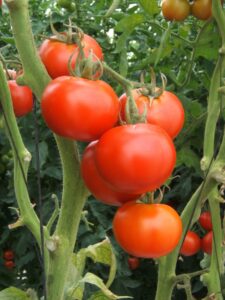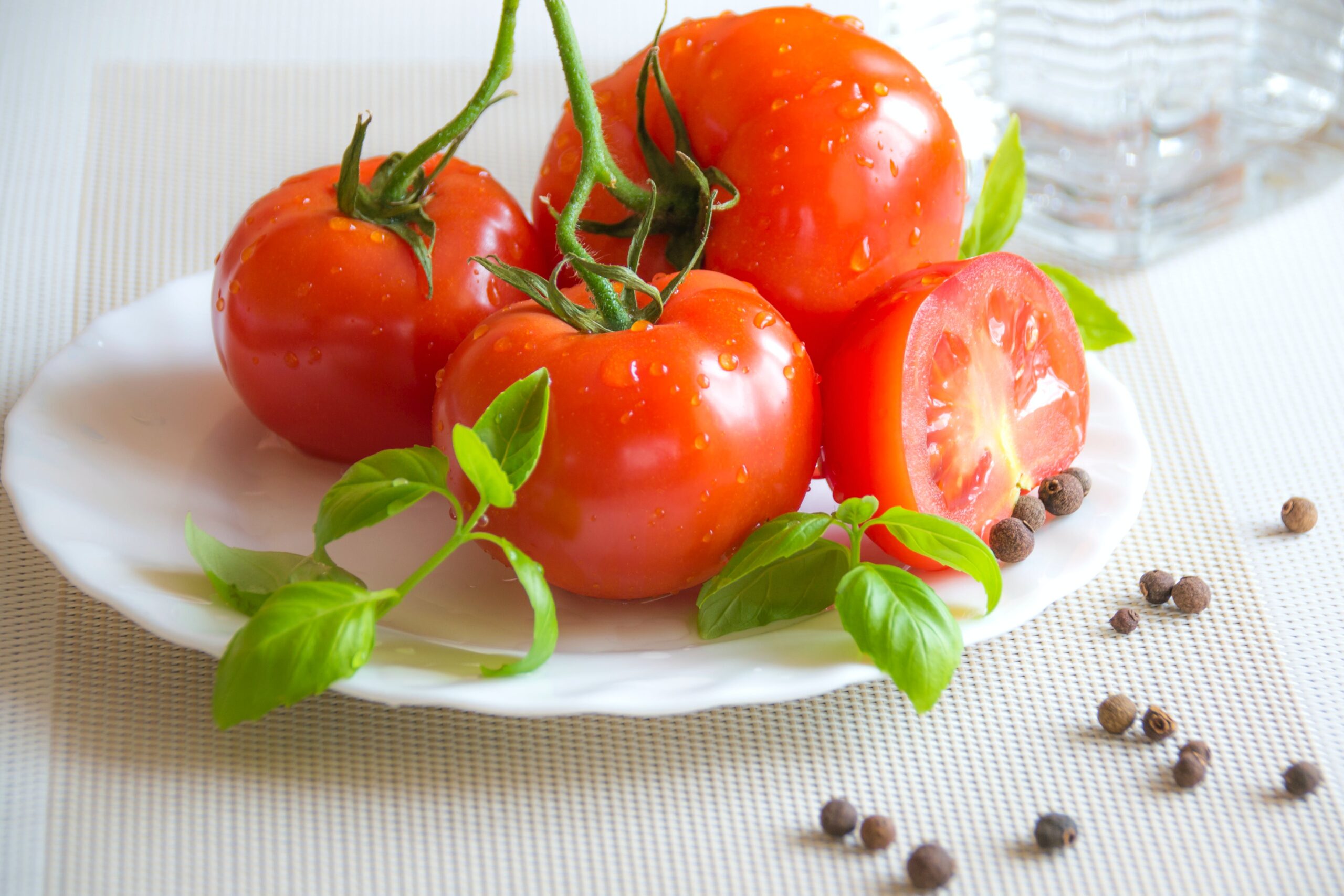Magnesium is the central constituent of the chlorophyll molecule – the green pigment necessary for photosynthesis. Plants do not need a lot of magnesium and it is relatively mobile in the tomato plant, meaning that it can move independently within the plant.

Magnesium deficiency is a common nutritional disorder in tomatoes. A mild deficiency has little effect on fruiting but a severe deficiency may cause smaller fruit and yield loss.
The symptoms generally appear first on the middle leaves when plants are carrying a heavy fruit load. The middle and bottom leaves begin yellowing between the veins, which remain green (intervenal chlorosis). The deficiency can progress rapidly from older to younger leaves.
The older leaves can become entirely yellow or orange, and brown spots may develop between the veins. Shoot growth, leaf size and fruit production are not usually reduced unless the deficiency is very severe.
Several factors influence magnesium deficiency.
- The season: Deficiencies are more common in autumn and winter when soil temperatures are low (<17°C).
- Fruit load: Just before the first harvest, when the fruit load on the plants is at a maximum, root growth stops and older roots can die off. This hinders magnesium absorption.
- Poor soil structure and drainage, which inhibit root development.
- Low levels of magnesium in the irrigation water.
- Excess calcium and/or potassium in the soil.
- High EC (electrical conductivity) levels in the soil, caused by high-potassium feed.
- The variety of tomato: Some varieties may be more sensitive than others, especially when there is a heavy fruit load.
Advice:
- The total magnesium level in the irrigation water should be 40–70 ppm. Calcium levels should be maintained at 80–150 ppm. Potassium levels in the irrigation water should be between 150 and 300 ppm, depending on the stage of the crop.

- Foliar spray: Magnesium can be supplied by foliar spray, using 2% magnesium nitrate (Magnisal). However, there is a risk of burning the leaves, especially in hot weather.
- Maintain reasonable EC levels in the soil.
- Ensure that the soil has good drainage and that roots can develop properly.
- To ensure your tomato crop retains its splendor and quality for the market, it is advisable to take note of the above advice and train greenhouse attendants accordingly.
By: Howard Wener

